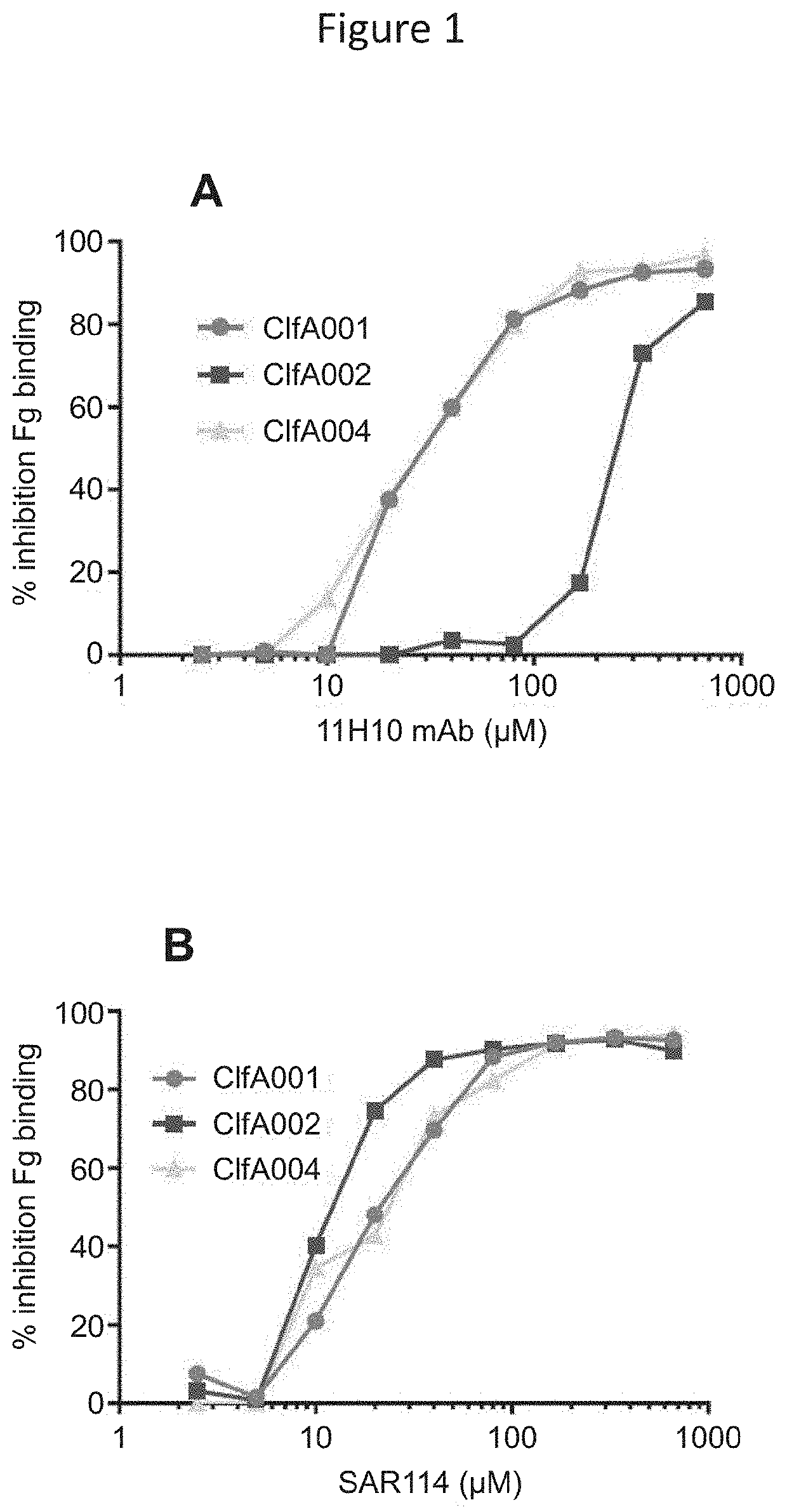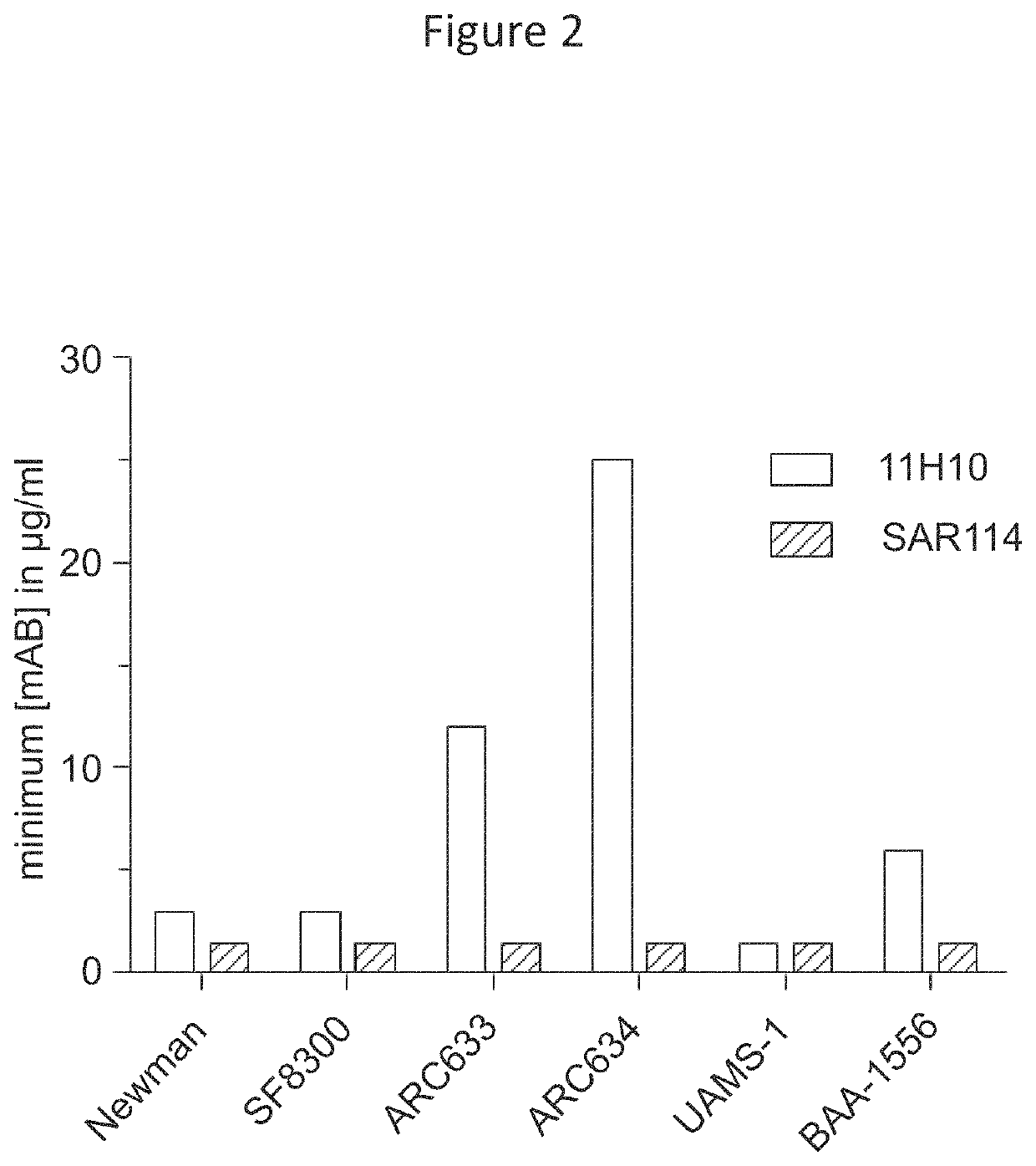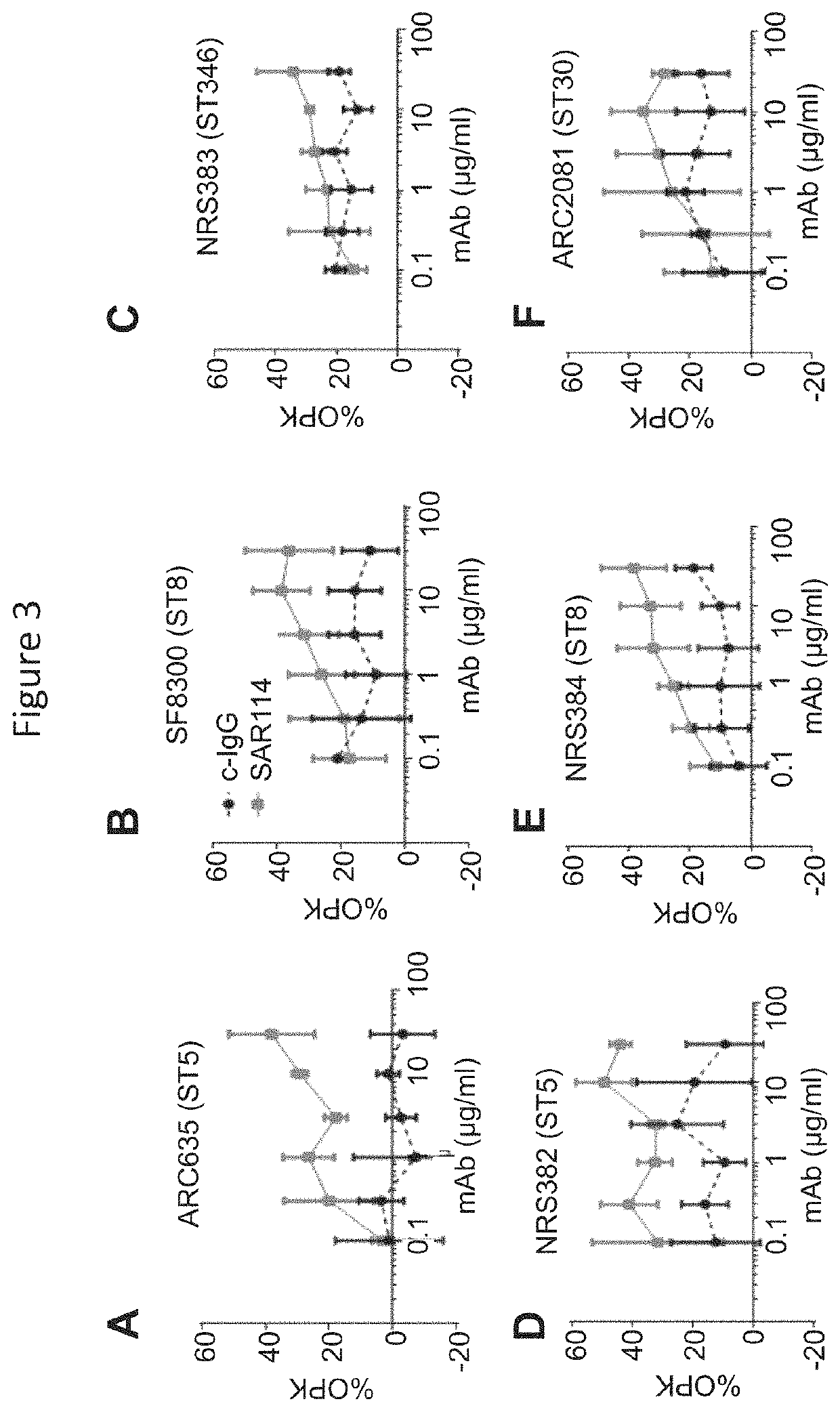Antibody directed against S. aureus clumping factor a (ClfA)
a technology of clumping factor and antigen, which is applied in the field of antigen directed against i > s. aureus /i > clumping factor a (clfa), can solve the problems of increasing the threat to public health of infections caused by amr-resistant bacteria
- Summary
- Abstract
- Description
- Claims
- Application Information
AI Technical Summary
Benefits of technology
Problems solved by technology
Method used
Image
Examples
example 1
[0110]This example demonstrates the selection and characterization of a monoclonal antibody that specifically binds to S. aureus ClfA protein.
[0111]Enhanced protective capacity and isolate coverage afforded by prophylaxis with an anti-S. aureus alpha toxin (AT) monoclonal antibody (mAb) (referred to as “MEDI4893*” described in International Patent Application Publications WO 2012 / 109285 and WO 2014 / 074540 as “LC10”) in combination with an anti-ClfA mAb (referred to as “11H10”) relative to the individual mAbs in a S. aureus lethal bacteremia model has been previously reported (Tkaczyk et al., MBio., 7(3). pii: e00528-16 (2016)). (Note that MEDI4893, which contains a YTE mutation not present in MEDI4893* was not used in mice because, although the YTE mutation increases IgG half-life in humans, it reduces serum exposure in mice.) Although 11H10 showed potent anti-ClfA activity, it exhibited a greater than 1000-fold reduced affinity (Kon was below limit of detection, ND in Table 1) and ...
example 2
[0118]This example describes the generation of SAR114-N3, which has an increased half-life as compared to SAR114.
[0119]It is well known that Fc regions of antibodies play a role in their half-life, and Fc engineering has been used to manipulate the half-life of therapeutic biologics. For example, a triple amino acid substitution M252Y / S254T / T256E (called the “YTE” substitution), has been engineered into the Fc regions of antibodies, including the anti-S. aureus MEDI4893 antibody, and it can lead to a 3-4 fold increase in half-life. However, the YTE mutation has also been shown to result in decreased binding to C1q and FcγRs and to reduce effector functions such as ADCC and CDC activity. (Monnet C., et al., Front Immunol. 6: 39 (2015).) The YTE mutation also reduces opsonophagocytic killing (OPK) of anti-bacterial antibodies. (See FIG. 6 showing that the YTE substitution reduces OPK of the anti-pseudomonas antibody Cam004.) Thus, although half-life extension was desirable for an anti...
example 3
[0127]This example describes the generation of SAR114-N3Y, which has improved stability as compared to SAR114-N3.
[0128]However, the “N3” variant contains a tryptophan (W434) that contributes to enhanced FcRn affinity, but also resulted in light sensitivity such that normal light conditions resulted in about 20% monomer loss over the course of one week, and intense light conditions resulted in more than 60% monomer loss in the same time period. Non-oxidizable hydrophobic residues (F, Y, L, I, V, A, and S) were substituted for the tryptophan (W434) and their effect on SAR114 half-life, OPK, and light sensitivity were evaluated. The F and Y substitutions were most similar to SAR114 N3 in terms of binding, and both had similar half-life extensions as the N3 alteration (see FIG. 9, top panel). A photostability assessment was conducted on SAR114 antibodies with the F (“N3F”; SEQ ID NO:20) and Y (“N3Y; SEQ ID NO:21) alterations. In this assessment, the mAbs were exposed to CWL (conventiona...
PUM
| Property | Measurement | Unit |
|---|---|---|
| volume | aaaaa | aaaaa |
| temperature | aaaaa | aaaaa |
| volume | aaaaa | aaaaa |
Abstract
Description
Claims
Application Information
 Login to View More
Login to View More - R&D
- Intellectual Property
- Life Sciences
- Materials
- Tech Scout
- Unparalleled Data Quality
- Higher Quality Content
- 60% Fewer Hallucinations
Browse by: Latest US Patents, China's latest patents, Technical Efficacy Thesaurus, Application Domain, Technology Topic, Popular Technical Reports.
© 2025 PatSnap. All rights reserved.Legal|Privacy policy|Modern Slavery Act Transparency Statement|Sitemap|About US| Contact US: help@patsnap.com



